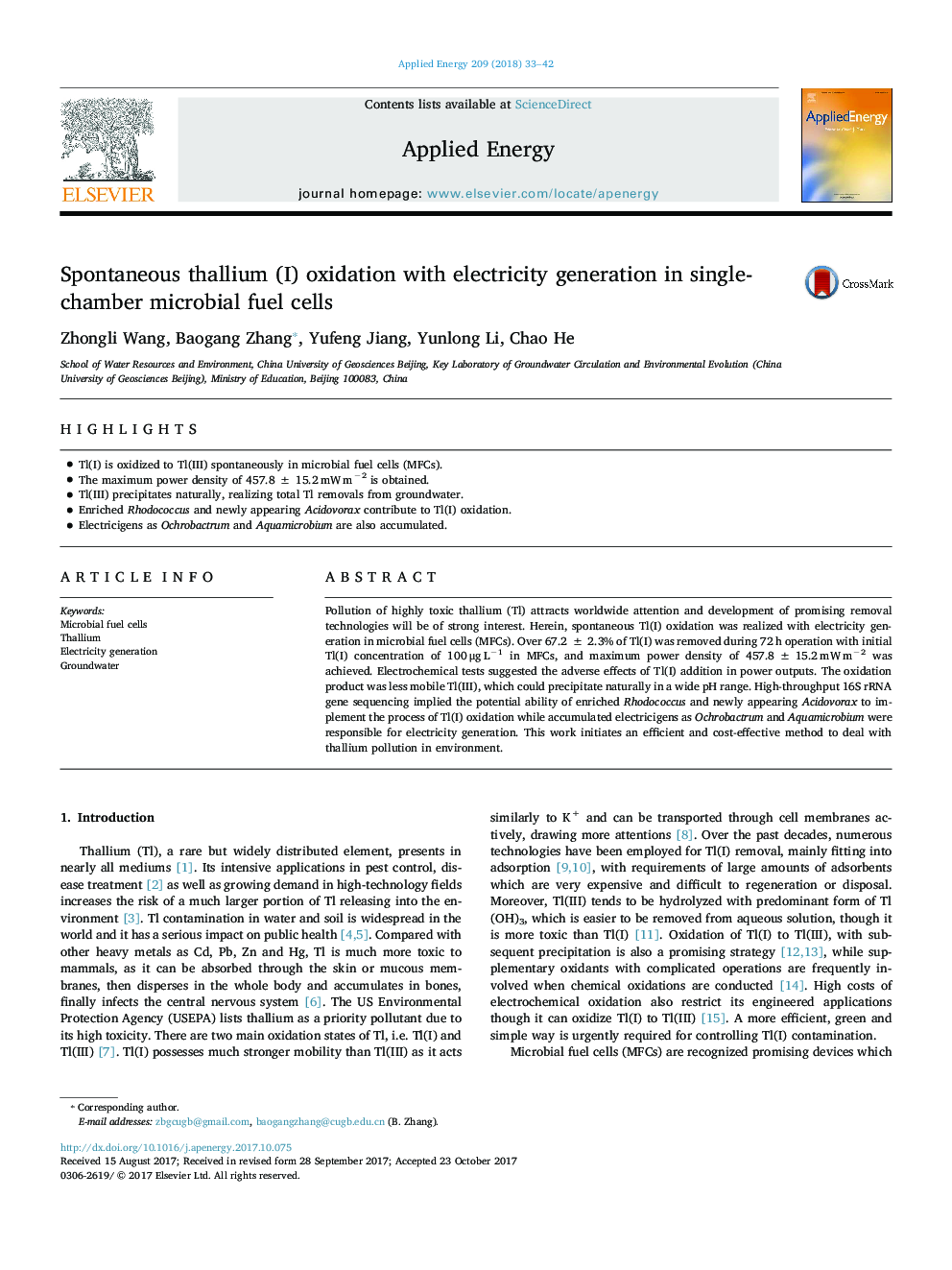| Article ID | Journal | Published Year | Pages | File Type |
|---|---|---|---|---|
| 6681511 | Applied Energy | 2018 | 10 Pages |
Abstract
Pollution of highly toxic thallium (Tl) attracts worldwide attention and development of promising removal technologies will be of strong interest. Herein, spontaneous Tl(I) oxidation was realized with electricity generation in microbial fuel cells (MFCs). Over 67.2â¯Â±â¯2.3% of Tl(I) was removed during 72â¯h operation with initial Tl(I) concentration of 100â¯Î¼gâ¯Lâ1 in MFCs, and maximum power density of 457.8â¯Â±â¯15.2â¯mWâ¯mâ2 was achieved. Electrochemical tests suggested the adverse effects of Tl(I) addition in power outputs. The oxidation product was less mobile Tl(III), which could precipitate naturally in a wide pH range. High-throughput 16S rRNA gene sequencing implied the potential ability of enriched Rhodococcus and newly appearing Acidovorax to implement the process of Tl(I) oxidation while accumulated electricigens as Ochrobactrum and Aquamicrobium were responsible for electricity generation. This work initiates an efficient and cost-effective method to deal with thallium pollution in environment.
Related Topics
Physical Sciences and Engineering
Energy
Energy Engineering and Power Technology
Authors
Zhongli Wang, Baogang Zhang, Yufeng Jiang, Yunlong Li, Chao He,
